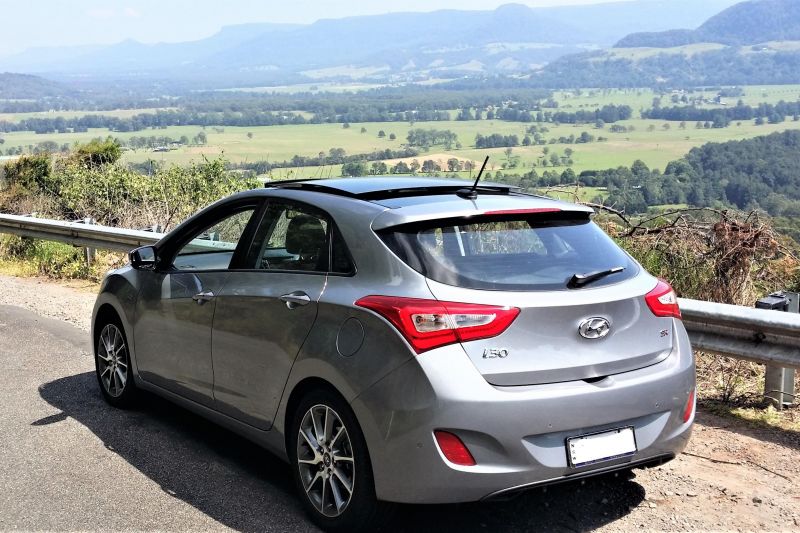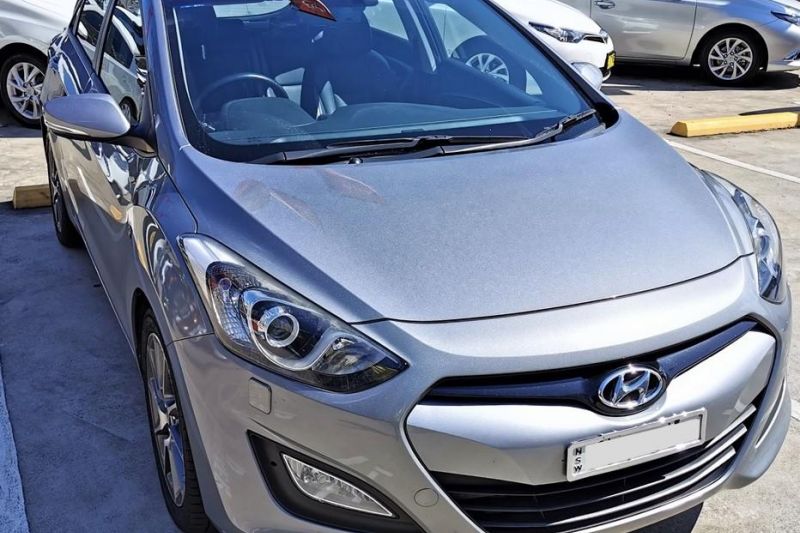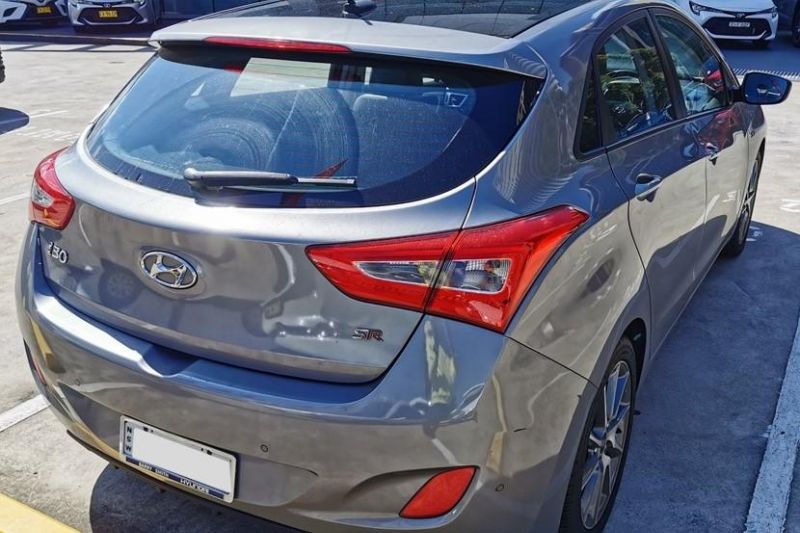About the Hyundai i30
Some Guy’s Opinion purchased this Hyundai i30 new with additional options for $28,000 (including all on-road costs). Some Guy’s Opinion wouldn’t buy this car again because: “Whilst the early ownership experience was pleasant enough, this car was was afflicted by build quality and reliability issues that would likely make ongoing ownership a frustrating and potentially expensive experience.
The car was returned numerous times to the dealership under warranty for issues relating to the sunroof and infotainment system. At just 76,000km (and eight months out of warranty) the clutch pressure plate failed. Hyundai were not interested, and quoted extreme prices to fix the issue. Other build quality issues had been creeping in for some time and were continuing to worsen, and it was for these reasons that I ended up selling it, did not buy another product from Hyundai and unfortunately and would not recommend buying one of these cars.”
How reliable has your car been? Tell us about any issues.
Initially the reliability of the car was good and everything seemed to be put together well. Unfortunately, this was not to last, with build quality and reliability issues afflicting my ownership experience after about a year or so.
The car had to be returned twice to the dealership under warranty for separate issues with its infotainment system; the first was for a glitch that caused the entire system to reset to default settings every time the car was started, whilst the second was a glitch that completely disabled the car’s navigation system.
The car also had to be returned twice for an issue with the sunroof (the issue was misdiagnosed the first time around) which was causing loud rattles throughout the cabin. The issue was linked to two broken clips that were causing the sunshade in the panoramic roof to move whenever the car hit any kind of imperfection in the road (the dealer couldn’t explain how this issue occurred). To fix the issue required the dealer to take the car back for three days to completely strip the roof lining to get at the clips; given the labour involved to fix it, it was fortunate that this was done under warranty.
The most significant issue occurred just after 76,000km when the clutch pressure plate failed, rendering the car unable to be driven. Unfortunately, as the car was just over five and a half years old by that point, the dealer just pointed to ‘normal wear and tear’ being the issue and quoted outrageous pricing (i.e. approximately $8000) to fix it.
I ended up going through a local mechanic to fix the issue; this was still a $2000 fix however and left me without a car for four weeks (largely due to a parts order mix-up caused by a separate Hyundai dealership), which was extremely inconvenient during the pandemic. I am not sure if failed clutch pressure-plates are an issue with these particular vehicles, but it was interesting to note that there was another GD i30 SR (same year and spec as mine) in the mechanic’s at the same time as mine presenting with the same issues and which was eventually fixed for the exact same problem.
Further to the above, as the car approached the four-to-five year mark other build issues included rubber lining in the driver’s door which started to fall out, an intermittent buzz in the driver’s door/A pillar at higher revs, other rattles elsewhere in the interior (noting that the aforementioned sunroof issue seemed to be getting worse again) and gas struts that were progressively losing their ability to hold up the hatch properly.
The car was becoming frustrating to drive, given the growing list of issues that either made themselves known pretty much any time I hit any kind of surface imperfection (which is everywhere on Sydney’s roads) or which would continue to cost me money when things needed replacing (such as the clutch, hatch struts, etc.) at points that had never been an issue when driving products from competing manufacturers.
Given the that infotainment system had been flashed twice but not replaced for the aforementioned warranty problems, I was also worried that failure of this system (which I believe is a known issue with these cars) might leave me with yet another expensive out-of-warranty fix.
While I accept cars will not maintain their showroom condition forever, I found such issues to be unacceptable for a car that was barely more than 5.5 years old, had covered less than 77,000km, and which had been cared for and never been driven particularly hard (particularly as I have previously owned cars that have been owned for much longer periods of time and which have covered much greater distances without any issues).
It was for these reasons that I ended up selling it, did not buy another product from Hyundai and unfortunately and would not recommend buying one of these cars.
What do you think of the ownership experience with your car?
Notwithstanding the aforementioned issues, the ownership experience of the car was good without being particularly remarkable.
Servicing was very straightforward; I have received some mixed advice from different dealers as to how frequently the car should be serviced, though in accordance with the advice I have received from my current servicing dealer it seems to get by fine without the intermediate services.
Lifetime capped-price servicing came with the car, so servicing costs were relatively predictable.
How has the purchase and aftercare experience been with your car?
The purchase experience of the car was good. An unfortunate roundabout incident saw my previous vehicle written off; given my large commute at that point, I needed a replacement quickly. The dealer was keen to negotiate a price and was able to source a car in the spec and colour that I wanted in a week from signing, so I was very satisfied in this regard.
The aftercare experience was a little more mixed. The roadside assist package which came with the car was useful when the battery died without warning. Likewise, early servicing experiences were good.
As indicated earlier, later on however moving between dealerships came with differing advice as to how often the car should be serviced. I found the level of service and inclusiveness of certain things varied a bit between dealerships.
As mentioned previously, once the warranty ended the level of service dropped right off; between the major five year service and things going wrong not long afterwards, I felt like I was being treated like a walking ATM rather than a customer, with poor customer service and exorbitant costs being quoted for out of warranty work.
Granted, this is something that I have experienced with other manufacturers too, but it felt far more evident as a first time Hyundai owner.
Are you happy with the price and features of your car?
For the price I paid ($28,000 in 2014), I was very happy with the features and price of the car.
In terms of features and interior design, the car has been great; aside from heated seats (which I believe became standard on the Series II model), the car lacked for nothing that I wanted or needed at the time.
Of particular note is the optional panoramic sunroof; apart from the aforementioned issue this feature completely transforms the ambience of the interior through the introduction of additional natural light. Unlike the fixed glass sunroofs on some of the i30’s competitors (such as the Toyota Corolla) at the time, the entire front section of the roof opens and is great on a warm day; this option isn’t cheap but is worth every cent.
There are also other neat features such as the door and puddle lights and the automatic-folding mirrors, which weren’t available on competing models from other manufacturers at the time.
The synthetic leather interior was ok (though I’d have preferred fabric seats had they been available); while it was easy to clean, it looked a bit cheap and you need to take some take care to ensure that the sides of the front seat bases last the distance. While most interior elements consist of leather and soft-touch surfaces, some plastics lower down look cheap and are prone to scratching.
The only other gripe with the car’s standard features are the HID headlights; while they generally deliver good low-beam spread and projection at higher speeds, the beam cut-off at low speeds is quite low and not adjustable. Most of the time this is not an issue, but it can be an irritation on unlit/low-speeds roads (based on articles elsewhere, this appears to be a gripe that has been picked up by other owners as well).
What do you think of the performance and economy of your car?
In mostly urban driving, the car could be pretty thirsty, averaging between 8.5-9.5L/100km, which would get around 500 kilometres on a tank); while it could take E10 unleaded, curiously it always got the best consumption on 95 octane fuel.
Out of town the best I managed was 5.8L/100km on a run from Goulburn to Sydney’s northern suburbs, though typical highway consumption was between high sixes to low/mid sevens, which is disappointing but relates to the car’s lacklustre performance at low revs (more on that below).
The car’s performance could be summed up as adequate. Hyundai claimed 0-100km in 7.7 seconds, though seat of the pants suggests around 8-8.5 seconds is closer to the mark. The SR is no GTi, and I didn’t buy the car expecting it to rival such cars.
Against other similarly-priced competitors at the time (i.e. the Kia Pro_Ceed GT, Hyundai Veloster SR Turbo and Holden Cruze SRi-V, both of which I have driven), the engine sorely misses the low-end torque of some of its turbocharged rivals; as a result it has to be worked pretty hard to get the best out of it. This is not entirely a bad thing as the 2.0L motor is pretty rev happy, but it doesn’t help fuel economy and its acoustics aren’t great.
Around town, it was fine; on the highway though, you had to change gears a fair bit in hilly areas, which was reflected by its average highway fuel consumption.
What do you think of the technology in your car?
The technology in the car was not particularly remarkable for cars from that time. Standard, the car came with a good factory navigation setup, with easy to read screens that had a pretty high level of customisation. The six-speaker sound system was also pretty good for a basic factory setup.
The infotainment system was not perfect though. It sometimes took a long time to boot up, and as previously indicated, the car had to go back to the dealership twice under warranty for different issues. It was also not well set up for Bluetooth streaming; while the system worked fine if you just left it alone, relatively quick skipping of tracks would freeze the entire system, which could only be fixed by turning the whole car off for 10 or so seconds and restarting it (this did not appear to be specific to my car; a relative bought a new top-spec Elantra shortly after my purchase, and his car had an identical issue).
I just left an iPod plugged in via the single USB port, and such a setup worked fine without issues. Radio reception was ok, though an irritating quirk developed after a few years, where the radio would intermittently revert to the first preset station when flicking down through the radio presets via the steering wheel buttons.
What do you think of the ride comfort and handling of your car?
For a torsion-beam setup, the SR rides surprisingly well on poor surfaces; this was one of the reasons I bought the car.
Up front, despite the sunroof there is plenty of headspace. While the driver’s seat position is higher than I’d like, I have no problem fitting my 6’2” frame behind the (height and rake adjustable) steering wheel. The front seats are both comfortable and supportive, and are comfortable over long distances (though for me at least, additional side bolstering would be welcome). For the money, the SR is a comfortable car to drive.
In terms of how the SR steers, flex-steer offers three different steering modes; “Comfort” mode was way too light and sensitive for my liking, and though most reviews I’ve seen prefer “Normal”. I’m happy with “Sport”.
In any mode however, the steering is almost entirely devoid of feel. The reworked suspension in the SR in my view is a good trade between handling and comfort. In terms of ride quality, the SR soaks up most small bumps pretty well though moderate or larger bumps do get noticeably transferred into the cabin. Compared to some of its competitors (including the Veloster SR Turbo) I was quite surprised how well the SR’s torsion-beam setup rides on Sydney’s pretty terrible roads.
The setup in the i30 SR also does a pretty good job at containing body roll up until about six or seven tenths, though the car will start to lean on its front outside tyre around this point.
On the topic of rubber, the SR’s Nexen tyres were terrible, particularly in the wet where they deliver no grip at all; this is a pretty common criticism for Hyundais and one I was aware of before purchasing the car. After getting a flat (it’s worth noting that the boot contains a full-size alloy spare) I swapped my i30 onto a set of Michelin Pilot Sport 3s and later onto Pilot Sport 4s; this change massively improved the SR’s grip and handling capabilities, particularly in the wet.
If you’re going to buy a used SR and the tyres need replacing sooner rather than later, I would strongly recommend budgeting for a set of quality tyres; as with the sunroof, they’re worth every cent.


